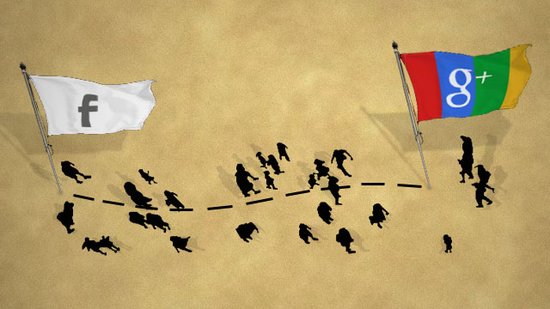 当Facebook花了10亿美元买下了分享照片的APP Instagram,到处都在谈论着这次并购意味着什么。是不是扎克伯格在做防御打算,担心Facebook的8.5亿用户不再每天上传2.5亿张照片?或者扎克伯格是在为进入移动业务做准备?因为Instagram的用户界面让Facebook在iPhone上看着很笨重。
当Facebook花了10亿美元买下了分享照片的APP Instagram,到处都在谈论着这次并购意味着什么。是不是扎克伯格在做防御打算,担心Facebook的8.5亿用户不再每天上传2.5亿张照片?或者扎克伯格是在为进入移动业务做准备?因为Instagram的用户界面让Facebook在iPhone上看着很笨重。
事实的真相是,这两方面的考虑都有——个体的社交网络正在分解着几大社交网络巨头,开放的社交网络赋予了Facebook和其他网站这样的权利。Facebook收购Instagram传达出的信号是小范围,紧密的社交网络正在慢慢的受到人们的欢迎,这往往是通过控制人们所分享的东西实现的。社交网络的巨人们,比如Facebook和Google,必须能够让用户们找到新的方法来建立更为紧密的社交圈子。而且在这种类似“病毒式传播”的过程中,市场将会面临许多新的挑战。
几乎在最近的10年,市场一直都热切期望社交网络用来做免费的广告,也就是用户口碑,用户为一个品牌或者是一款产品做宣传。这种设想部分是建立在罗伯特的麦特卡尔定律(Metcalfe's Law)基础之上的,这个概念是以太网的发明者提出的,根据他的观点,在任何一个网络系统中,随着用户的增加,这个系统的价值也将成倍的上升。就像20世纪70年代的洗发水销售一样,你将你的产品介绍给一位顾客,然后他又将这个产品介绍给其他两位朋友,以此下去,直到全世界都开始关注你这个护发产品。这种“病毒式扩散”需要有大量的朋友关系。
麻烦的是,麦特卡尔定律错了,至少在人类的社交网络领域是错的。在2006年IEEE Spectrum的一个重要专栏里,研究人员Bob Briscoe, Andrew Odlyzko和Benjamin Tilly用具体的数字表明,如果社交网络的节点不是平等的,那么这个网络就存在着根本缺陷。这几位作者主要指出了齐夫定律(Zipf’s law),这是20世纪20年代,语言学家George Zigf提出的一个概念。他指出,在任意一个资源系统中,对于每一个附属项目来说,价值都会减少。在英语里,我们在7%的话语中,都会用到“the”这个单词,有3.5%的单词后面都会有“of”,一般都是跟在某个名词的后面比如“floccinaucinihilipilification”。在Facebook上,你的圈子也是按照这个规律发展的从你的配偶到你的好朋友到你的老板再到现在在冰岛的前女友。
人类的社交圈子同英语里的单词一样,后面都跟了很长的尾巴,往往越是后面的,越没有价值。新的,小的社交媒体工具对此十分认同,因为他们看到了我们在分享和收听上都是有局限性的。比如以下这些社交网络:
Path。这个社交网络让你的朋友圈子局限在150人,这与社会学家Robin Dunbar所提出的数字正好吻合,他曾经提出,人的人际关系的最高数字也就是150人。但是Path用户可以在Facebook和Twitter上发照片,分享视频或者是定位i,而最大的吸引力在于能够建立一个紧密的,高质量的社交圈子。
Pinterst(图钉)。这个社交网络可是2012年的新宠,用户数量飞升到第三,紧随Facebook和Twitter其后。用户标记或者是将他们喜爱物品的照片钉上去。然后在剪贴簿里分类。用户可以关注和评论这些照片,但是以我的观察90%用户的照片没有任何评论。图钉上的东西都是用户的喜好,与用户如何交流完全没有关系。
When Facebook bought the photo-sharing app Instagram for $1 billion, theories flew as to what it might mean. Was Mark Zuckerberg defensive, worried that his 850 million Facebook users might stop uploading 250 million photos a day? Or was he making a proactive move into mobile, where Instagram’s friendly interface makes Facebook look clunky on iPhones?
The real story is both—and one of splintering social networks that are breaking up the vast, open “social graphs” that give Facebook and others such power. Facebook’s acquisition of Instagram is a signal that smaller, closed networks are growing popular by giving audiences more control over what they share. The networking giants, such as Facebook and Google, will have to allow consumers new ways to build tighter social circles. And marketers will face new challenges in “going viral” among the masses.
For nearly a decade, marketers have been agog over the promise of social networks to provide free advertising, a cascade of word-of-mouth in which consumers act as advocates for a brand or product. The dream is based in part on Robert Metcalfe’s law—the concept by the inventor of the Ethernet that in any networked system, value grows exponentially as more users join. Like the old 1970s shampoo commercial, you tell a customer about your product, and she tells two friends, and so on, and so on, until the world is knocking on your hair-products door. Going viral like this requires massive connections of friends.
Trouble is, Metcalfe was wrong, at least with human networks. In a landmark 2006 column in IEEE Spectrum, researchers Bob Briscoe, Andrew Odlyzko, and Benjamin Tilly showed mathematically that networks have a fundamental flaw if all nodes are not created equal. The authors pointed primarily to Zipf’s law, a concept by 1930s linguist George Zipf that in any system of resources, there exists declining value for each subsequent item. In the English language, we use the word “the” in 7 percent of all utterances, followed by “of” for 3.5 percent of words, with trailing usage of terms ending somewhere around the noun “floccinaucinihilipilification.” On Facebook, your connections work the same way from your spouse to best friend to boss to that old girlfriend who now lives in Iceland.
Human networks, like words in English, have long tails of diminishing usage. New, smaller social media tools are resonating because they recognize we have limits on what we share and whom we listen to. Here are a few:
• Path. This social network restricts you to 150 friends, the exact number that British anthropologist Robin Dunbar suggested was the upper limit on human relationships. While Path users can post images, videos, or locations to Facebook and Twitter, the core appeal is creating a closed circle of high-quality connections.
• Pinterest. This network is the darling of 2012, skyrocketing to No. 3 in usage behind Facebook and Twitter. Users tag, or “pin,” images of things they like and sort into online scrapbooks. While users can follow others and comment on their posts, about 90 percent of usage in my observations has been pins with zero social comments. Pinterest is all about what you like, not how you communicate with others.
 当Facebook花了10亿美元买下了分享照片的APP Instagram,到处都在谈论着这次并购意味着什么。是不是扎克伯格在做防御打算,担心Facebook的8.5亿用户不再每天上传2.5亿张照片?或者扎克伯格是在为进入移动业务做准备?因为Instagram的用户界面让Facebook在iPhone上看着很笨重。
当Facebook花了10亿美元买下了分享照片的APP Instagram,到处都在谈论着这次并购意味着什么。是不是扎克伯格在做防御打算,担心Facebook的8.5亿用户不再每天上传2.5亿张照片?或者扎克伯格是在为进入移动业务做准备?因为Instagram的用户界面让Facebook在iPhone上看着很笨重。
